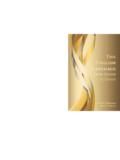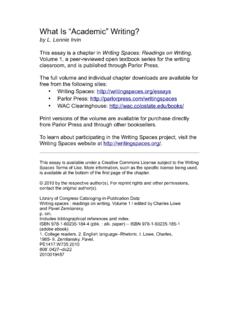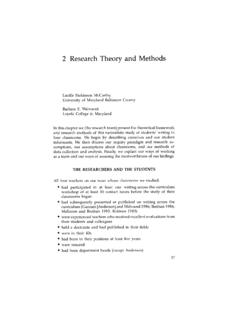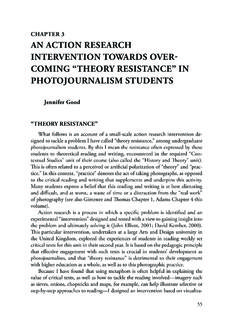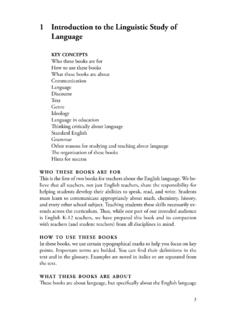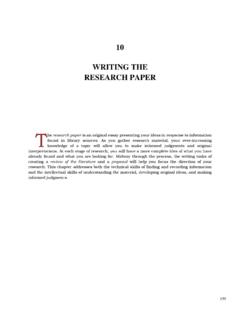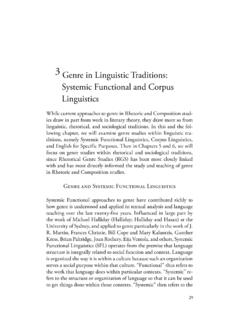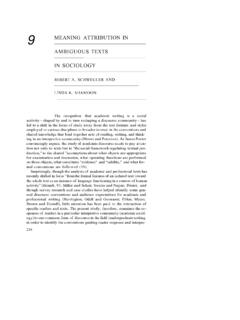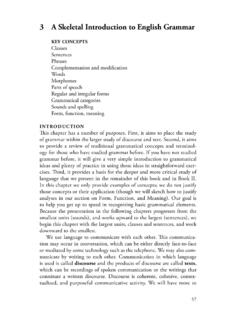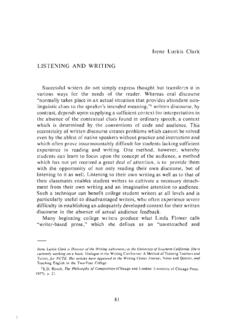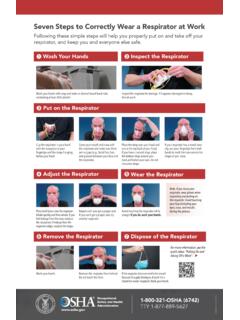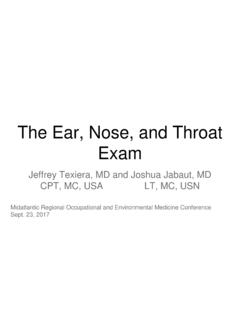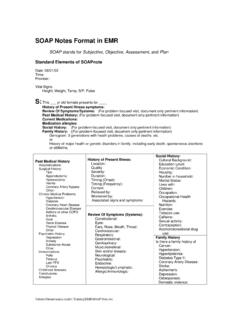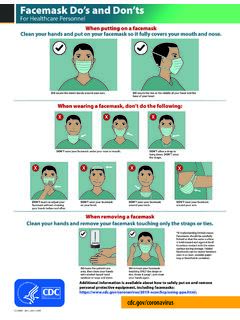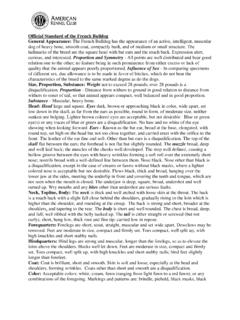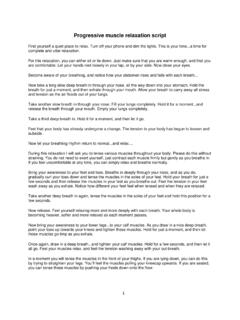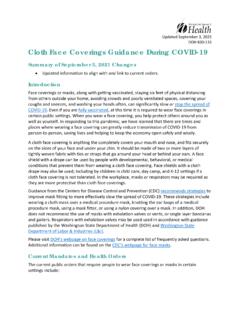Transcription of 4 Phonetics and Phonology - WAC Clearinghouse
1 894 Phonetics and Phonology key conceptsArticulatory Phonetics , phonetic symbolsConsonants, approximants, vowelsSyllables, feetPhonology, phonemes, allophones, phonological rulesi n t r o d u c t i o nIn this chapter we sketch the pronunciation system of English. We begin with Phonetics , a system for describing and recording the sounds of lan-guage objectively. Phonetics provides a valuable way of opening our ears to facets of language that we tend to understand by reference to their written rather than their actual spoken forms. Phonology concerns itself with the ways in which languages make use of sounds to distinguish words from each other.
2 Teachers should be knowledgeable about the Phonetics and Phonology of English because (1) the sound system is primary and the basis for the spelling system; (2) they may have to teach English pronunciation to stu-dents who are not native speakers of English; (3) they may have to teach poetry, which requires that they teach about rhyme, alliteration, assonance, and other poetic devices that manipulate sound; (4) it is important to un-derstand accents and language variation and to react appropriately to them and to teach appropriate language attitudes about them to students (see our chapters on Language and Society and Usage in Book II); (5) we are so liter-ate that we tend to hear the sounds of our language through its spelling system, and Phonetics / Phonology provides a corrective to that; and (6) pho-netics and Phonology provide systematic and well-founded understandings of the sound patterns of rt i c u l ato ry p h o n e t i c sWe have three goals in this section.
3 First, we introduce you to the ways in which the sounds of English are produced. Second, we develop a system for classifying speech sounds on the basis of how they are produced. Simultane-ously we introduce an alphabet approximating that developed by the Inter-national Phonetics Association (IPA), which will allow us to refer to sounds quite precisely. When we want to indicate that letters are to be interpreted as phonetic symbols, we enclose them in square brackets, [ ], and when we want to indicate that letters are to be interpreted as letters from an ordinary spelling system, we enclose them in angled brackets, < >.Delahunty and Garvey 90 The phonetic alphabet uses many of the letters of the English alphabet, but their pronunciations are very restricted and are not always the ones you might expect.
4 In this system, there are no silent letters every phonetic symbol represents an actual sound. Every letter always has the same pronunciation regardless of its context, no letter has more than one pronunciation, and no sounds are represented by more than one letter. To make fine distinctions, phoneticians add special symbols, called diacritics, to the basic letters. For some English sounds and for languages other than English, symbols not from the English alphabet have been devised. (You might visit the IPA web site for a full listing of the symbols.) In the sections to follow, we describe the sounds represented by these symbols and how these sounds are made.
5 As we go through these sections, pay attention to the ways in which individual sounds are ordinarily spelled in English, as well as to the phonetic spellings. To produce speech, air must flow from the lungs through the vocal tract, which includes the vocal folds (popularly called the vocal cords, though they are more like thick elastic bands than strings), the nose or nasal cav-ity, and the mouth or oral cavity (See Figure 1). The vocal folds vibrate for some sounds but not for others. Air flows through the nose for certain sounds but not others. But the main creator of speech sounds is the mouth . We will describe the roles that each of these elements plays in the following 1: vocal apparatus91 Phonetics and Phonologyc o n s o n a n t sConsonants include the sounds we represent as <p, b, t, d, m, n, f, v, s, z, l, r, h> in the ordinary alphabet.
6 All consonants are produced by entirely or almost entirely stopping the airstream coming from the lungs. When we almost entirely stop the airstream we force it through such a narrow opening that the airflow at that point is turbulent and noisy. We classify consonants according to the following characteristics: (a) whether or not the vocal folds are vibrating (voicing); (b) whether the sound is made with a fully stopped or merely constricted airstream (its man-ner of articulation); (c) where in the mouth the stoppage or constriction is made (its place of articulation); (d) whether or not air is flowing through the nasal cavity (nasality); and (e) whether or not the lips are pursed (lip-rounding).
7 Voicing As a warm-up exercise, make the sound fffff, and keep it going for a count of five. Now make the sound vvvvv, and keep it going for a count of five. Now alternate these two: fffffvvvvvfffffvvvvv. You probably noticed that vvvvv had a buzz that fffff did not have. That buzz is caused by the vibrating of your vocal folds which you can check by putting your fingers on your throat or by covering your ears as you alternate fffff and vvvvv. Now try the same exercises with the first sounds of the following words: thigh, thy; sip, zip. You should be able to feel the vocal folds vibrate as you make the second sound of each pair. Sounds produced with vibrating vocal folds (see Figure 1) are said to be voiced; those produced without vocal cord vibration are voiceless.
8 Table 1 lists the voiced and voiceless consonants of English. The letters in [ ] are the phonetic symbols for the sounds. voiced voiceless by [b] pie [p] my [m] wet [w] vie [v] fie [f] thy [ ] thigh [T] die [d] tie [t] nigh [n] zip [z] sip [s] lie [l] rye [r] Delahunty and Garvey 92 beige [Z] bash [S] jive [dZ] chive [tS]
9 Yet [j] guide [g] kite [k] gong [N] hive [h] table 1: voiced and voiceless consonantsExercise1. Collect a set of words in which each of the voiced and voiceless sounds listed in the two columns above occurs as the first sound of a word, in the middle of a word (specifically between two vowels), and at the end of a word, as in: [b] bird, rubbing, rub; [p] pan, tapping, tap. How are each of these sounds ordinarily spelled? (Note: English single and double consonants, as in rub and rubbing, tap and tapping, rep-resent the same sound.)
10 The doubled consonants tell us how the vowel before them is to be pronounced; cf. tapping, taping.) 2. Identify the sound represented by each of the following phonetic symbols and for each sound collect five words in which it occurs: [p, b, f, v, T, , S, Z, tS, dZ, s, z]. How is each of these sounds ordinarily spelled?NasalityMake the sound represented by <m> in the word Pam and continue it for some seconds. As you continue it, pinch your nose and observe what happens to the sound. It should stop immediately. This shows that air was flowing through your nose as you produced this sound. Now try the same little experiment with the <n> of pan and the <ng> of pang.
